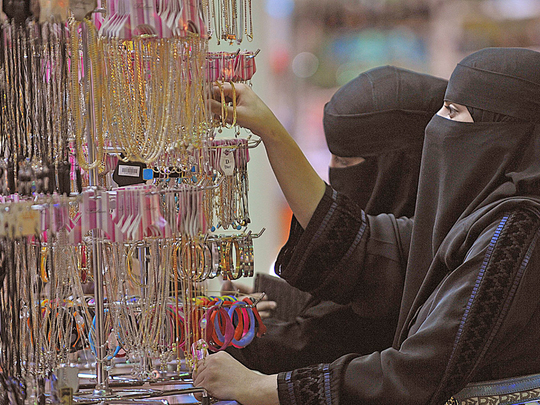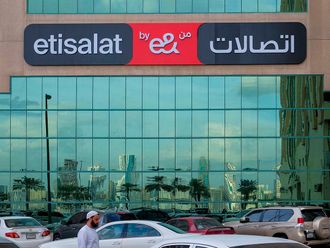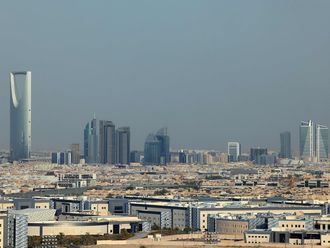
It’s clear that the immediate geopolitics of the Middle East have become no less relevant now than when mentioned last week.
In one of those examples where minimal change hides the tensions of offsetting forces, benchmark Brent oil prices have deceptively hovered around the $100 (Dh367) mark.
To some extent it has to be imagined that prices, and therefore receipts to the exporting states of the Gulf, have been upheld by a certain risk premium for some time.
Yet there comes a point when political turmoil and apparently deteriorating security damage expectations of stability and business behaviour.
At the same time, oil analysts refer to a short-term supply “glut”, only possibly to be overtaken by a longer-term rebuilding of demand. In a nutshell, confusion reigns.
If you add the medium-term issue that many specialists foresee a steadily declining demand for fossil fuels worldwide — indeed as a matter of systematic policy, for financial, security and environmental reasons -- analysts are bound to scrutinize the prospects for the GCC’s core earnings stream.
For example, Capital Economics advises that in Saudi Arabia, where the rate of oil production declined in the second quarter over the first, the sector may “continue weighing on growth”, and little improvement may be expected from the non-oil sector as fiscal conditions are tightened. That said, GDP growth for this year at least may still turn out at 4 per cent.
Vulnerablity
In the meantime, the situation is very fluid, of course. Calls may arise for, specifically, Saudi reaction to stabilise oil prices, which have signalled a certain vulnerability.
A modest amount of slippage would do no harm to the world economy, giving support when Europe and the Far East (if not the US) could do with a lift, but anything more significant than that would spell varying degrees of difficulty for Gulf governments’ annual budgets.
“The caveat is that forecasting GDP growth is tricky, since Saudi Arabia is the marginal producer in the oil market,” William Jackson, senior emerging markets economist at Capital Economics told me. “But, taking a step back to look at the multi-year horizon, the oil sector is unlikely to give the same level of support that it has, with rising production in the US [and elsewhere]. Growth rates in the next three to five years are therefore likely to [fall]. If that happens, there would undoubtedly be knock-on effects to others in the region, for instance to Dubai and its services-based economy, through the impact on liquidity.”
As for the business mood, confidence goes a long way in terms of defining momentum, and in fact the direction of travel.
Report
In the bigger picture, one clear indication is the state of foreign direct investment (FDI), which reportedly has continued its diminishing trend in the Gulf.
National Bank of Kuwait’s regular research update noted that FDI inflows to the GCC had dropped by 14.6 per cent year-on-year to $24 billion, despite a rising global total, citing the keystone, yearly data of the United Nations Conference on Trade Development (UNCTAD), which has released its World Investment Report for 2014. The regional share in fact slipped to 1.6 per cent, having reached 4.2 per cent in 2009.
Senior economist Omar Al Nakib nominated a mixture of influences. While some of the decrease could be accounted for “by reference to the social tensions and political uncertainty that have affected the broader Middle East, the reduction is likely more a reflection of the tailing-off in investments following the completion of major hydrocarbon projects,” he argued. Qatar’s liquefied natural gas (LNG) expansion programme and various petrochemical and construction projects in Saudi Arabia were quoted.
Nor is it a uniform tendency. The retreat of FDI into Saudi Arabia has had a distorting effect on the overall figure. Says NBK, “the UAE is the only country to record four consecutive years of increasing FDI inflows, as investors return to the property, manufacturing and services sectors, and the country gears up for the Dubai World Expo in 2020.”
Obtaining credit
Moreover, the Gulf “has become more conducive to foreign investments. Facilitating FDI has been the significant strides in improving business environments,” with substantial reforms to starting a business, obtaining credit, enforcing contracts and trading across borders, the memo observes, besides the well-known, favourable tax regimes.
There’s the other side of the coin, too, since aggregate GCC outflows increased by 93 per cent from the previous year, totalling $26.7 billion, as member states directed swollen foreign exchange reserves into overseas projects and acquisitions. Petrochemicals producers, for instance, have been prominent, venturing into the US’s energy-oriented boom.
The expression ‘if you can’t beat them, join them’ springs to mind. Certainly, in the nature of dynamic market economics, there’s no point in relying on a given, albeit bountiful, resource indefinitely. In an ever-changing and often turbulent world, taking a stake and consolidating into competing ventures makes a great deal of sense.












